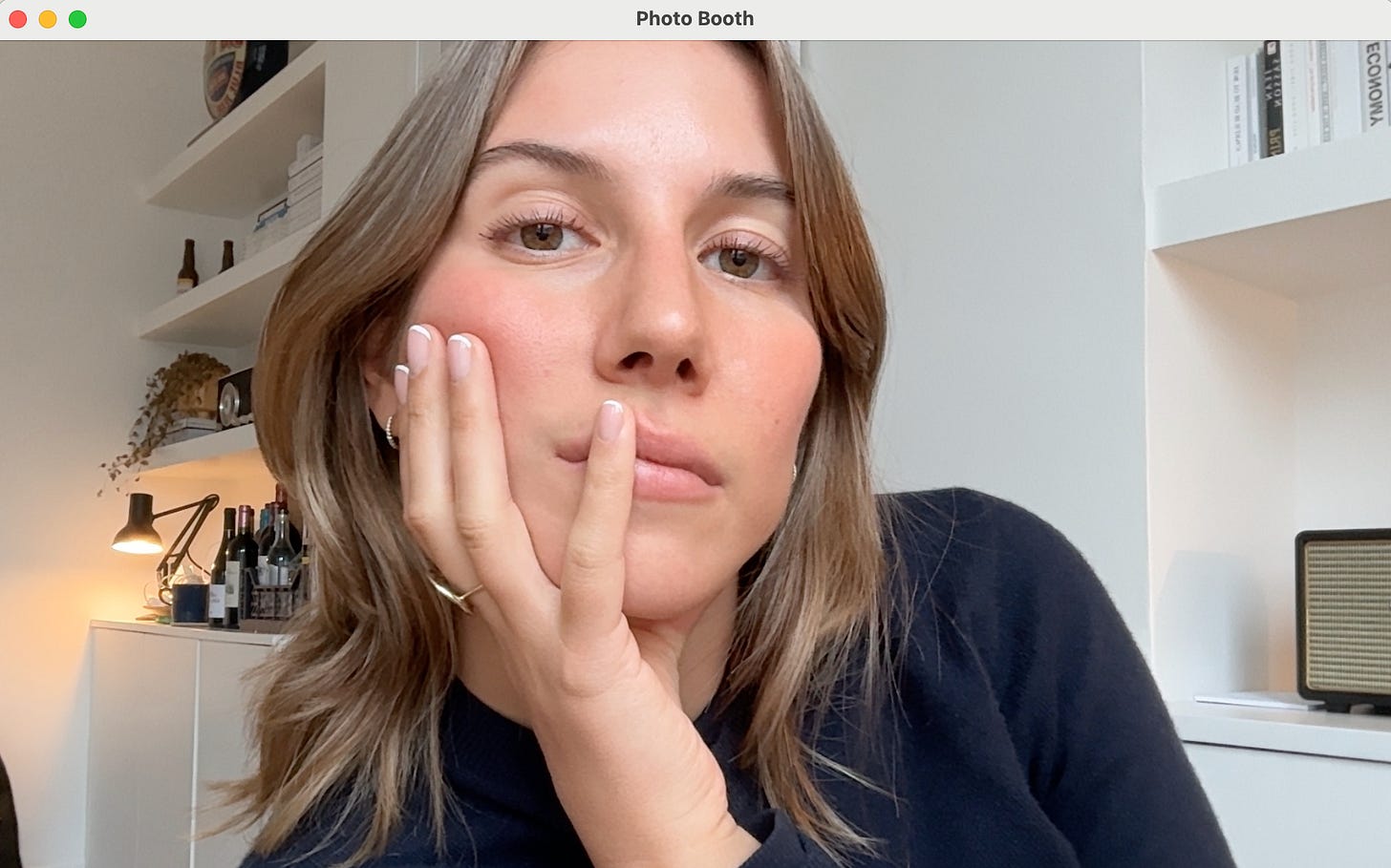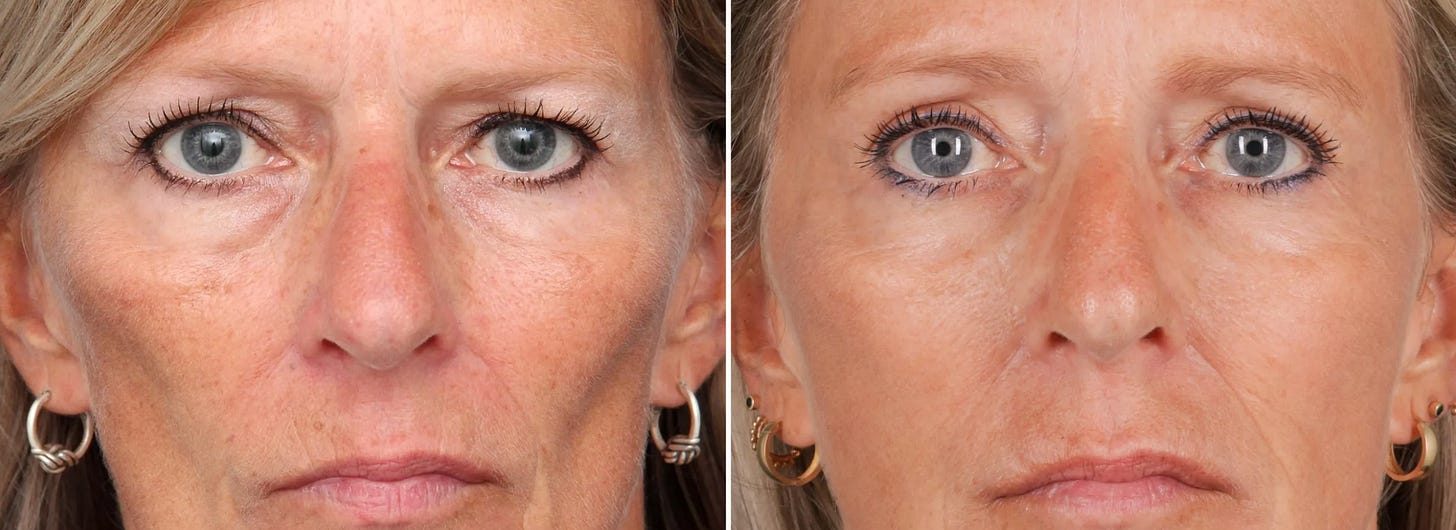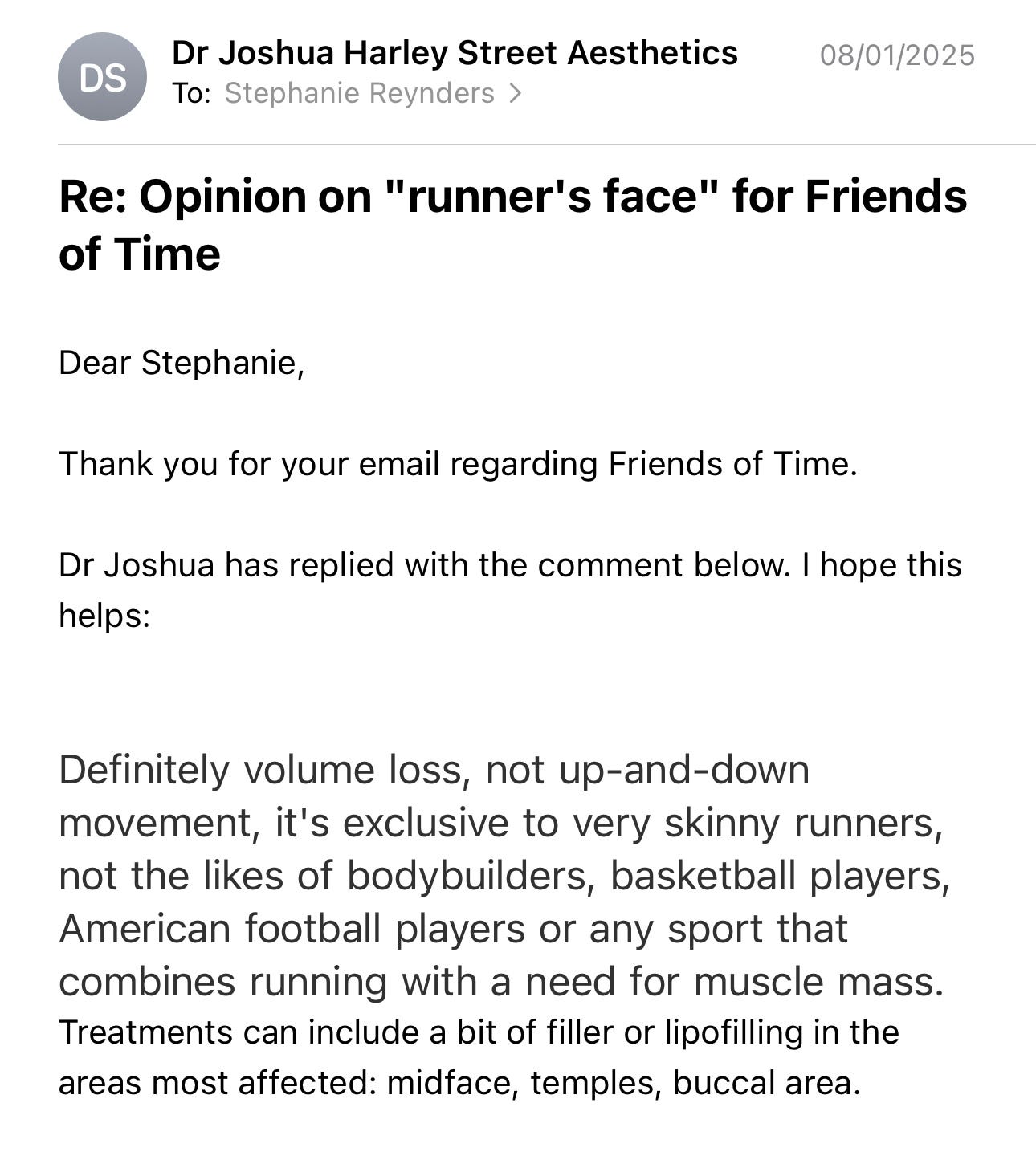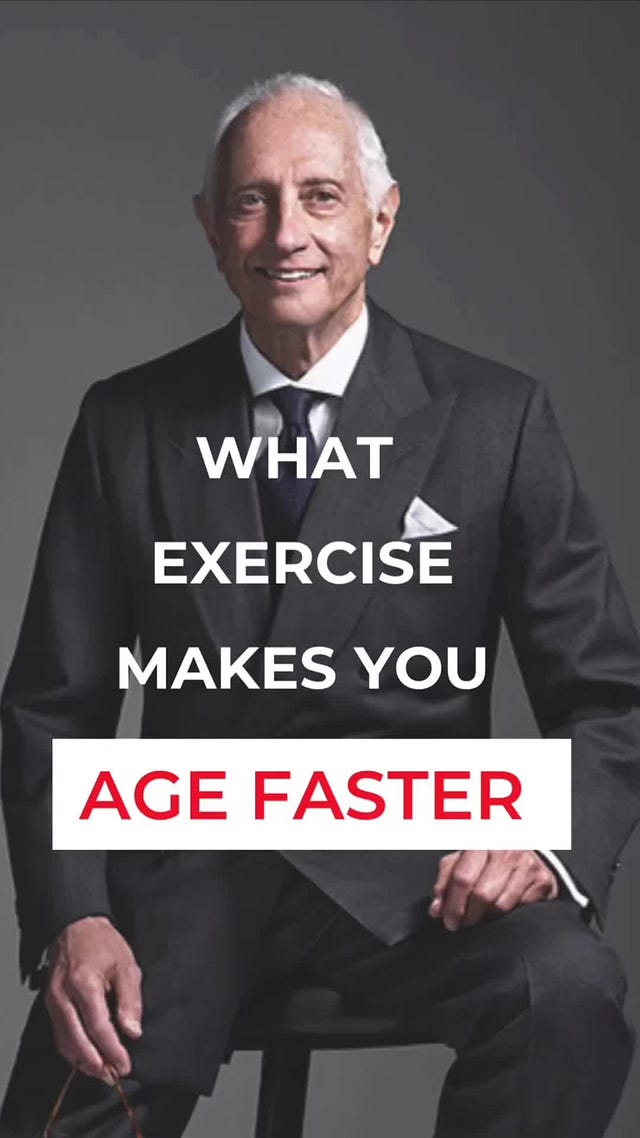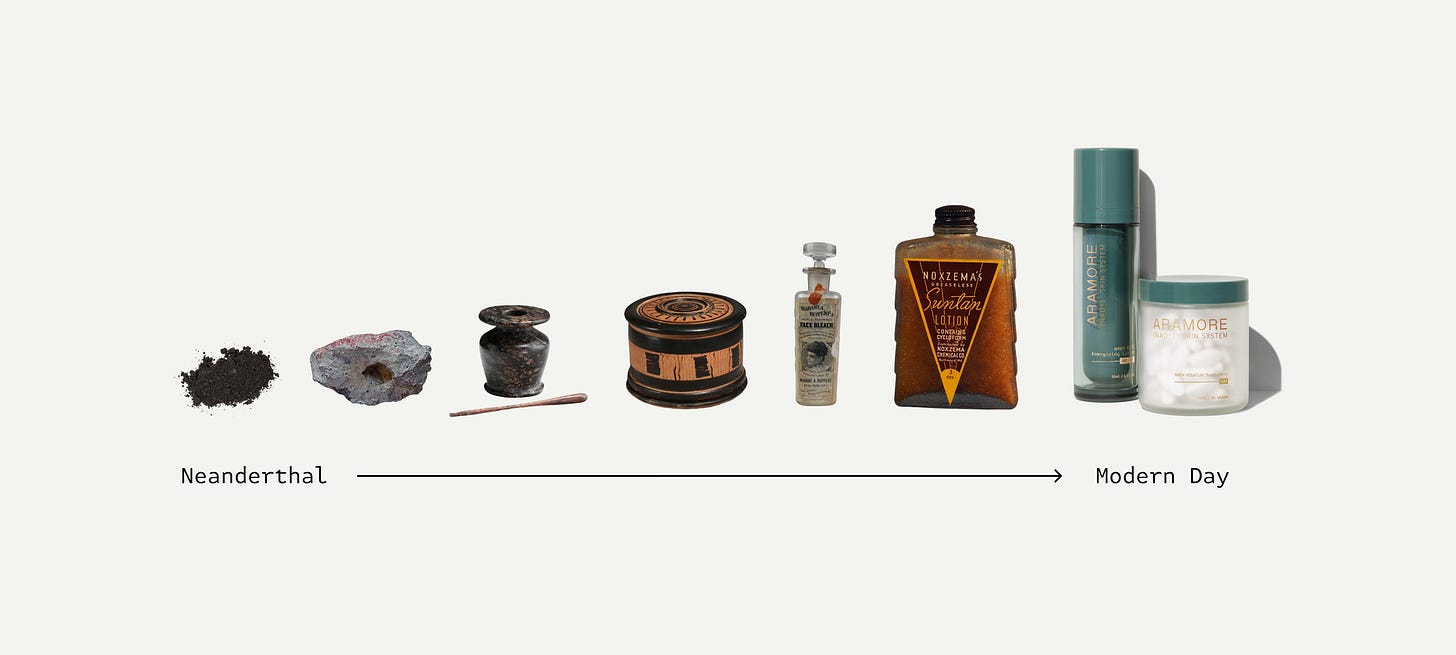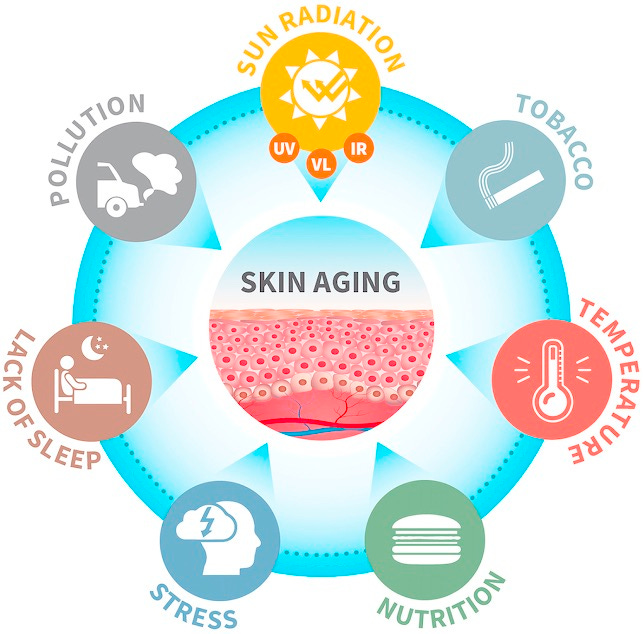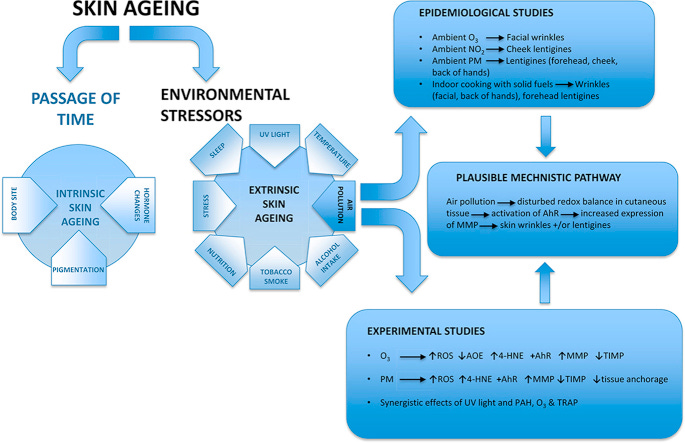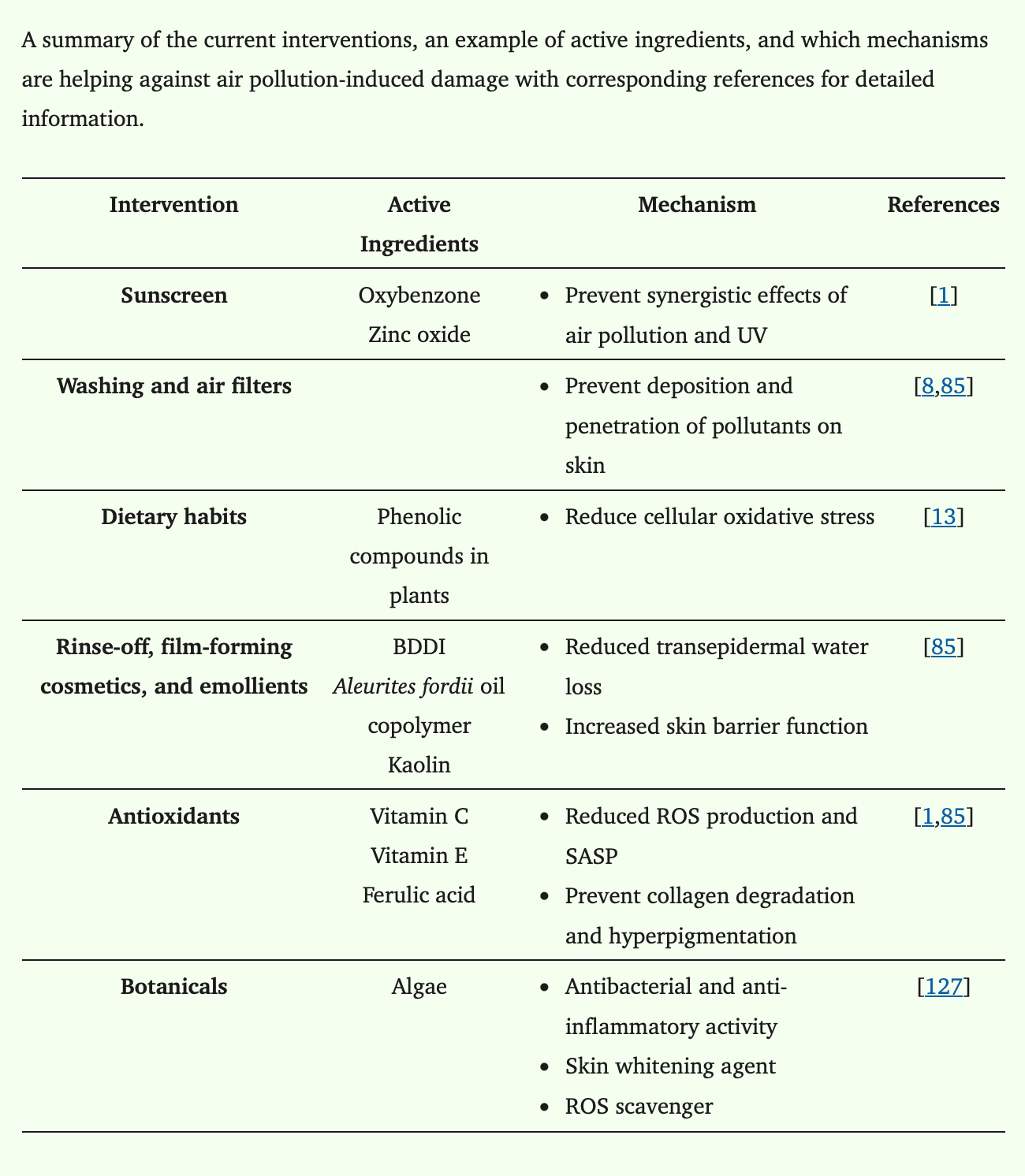Hey everyone. It’s cold - it’s grey - it’s definitely January. And we’re still not on a Caribbean beach you guys, go easy on you and yours.
If you’ve recently taken your runs indoors, you may have had the pleasure of admiring your face, posture and stride in the (seemingly always) opposing reflective windows and mirrors too. I remember it like it was yesterday – the first time I saw the skin of my face detach from its bone and move upwards and downwards by approximately (read: what felt like) 5 centimetres with every step. Is this causing… runner’s face? While few runners (including me) would be deterred because of something as vain as this, surely nobody wants to age much faster than their predetermined natural pace either.
So I did some digging, emailed Belgium’s most famous cosmetic doctor, and explored the dichotomy in today’s cultural dispositions towards facial ageing.
In this newsletter:
does running age your face? (free)
adding artificial youth vs. removing artificial agers (free)
not so vain: the link between your face and the rest of your body (below paywall)
what are your peers thinking and doing? (below paywall)
First things first. Let’s get it out of the way: the answer is no. Runner’s face does not exist. The ‘look’ the media is describing, is a combination of having virtually no fat, natural ageing and exposure to free radicals in our environment. Does that mean running can ‘cause’ it? Yes. But so can being outside, eating healthily, and simply being alive over the age of 30. To seal the deal, I double confirmed whether the up-and-down movement of running could cause any additional long-term consequences. After emailing the most well-known cosmetic doctor of Belgium, we got the final blow.
Settled.
The first time “runner’s face” was spoken about on the internet was in 2011, in a Runner’s World article. And despite the earliest source disproving the theory 13 years ago, people still adamantly believe it. It doesn’t help that this plastic surgeon’s TikTok went viral in 2023, amassing nearly 3 million views and hundreds of commenters agreeing with him. And recently a podcaster got cancelled because he said “21-year-olds now look 24” because of long-distance running. Lol.
Of course, this is a plastic surgeon and he has mouths to feed. Alas, the amount of people agreeing with him reminds me of the more recently trending ‘cortisol face’. And while we can moan and complain about (social) media’s fixation on beauty standards, we can’t lie and say the human race hasn’t forever been obsessed with the evasive eternal youth. We can’t blame culture for something that is hardwired into our biology. From Neanderthals enjoying makeup, to the use of songyi mushrooms to promote new cell growth in China’s Shang dynasty.
What we can blame our culture for, however, is how much it has overblown and centralised its importance and priority in our lives. Luckily, that same culture thrives on contrast, paradox and balance. For every strong movement, we can expect an equally defensive countermovement (social pendulum theory). There is ‘preventative botox for teenagers’ and also ‘dissolving toxic fillers’. There is ‘wearing make-up while giving birth’ and also ‘attending red carpets make-up free’. There is ‘$300K shape shifting’ and also ‘$0 facial massaging your way to a sharp jawline’. These recent trends signal a very interesting phenomenon to me: a cultural shift in the way we approach satisfying our biological urge to feel good about how we look. Slowly but surely, the general population’s approach seems to be shifting from “adding artificial youth” to “removing artificial agers”.
Adding artificial youth: Identifying and adding things to our face to try and re-implement youthful features, such as botox, fillers, liposuction, dermal treatments, elaborate skincare routines, facial exercises, face masks, cosmetic surgery and so on.
Removing artificial agers: Identifying and removing things we are interacting with that have a negative effect on our skin and make us look older than we are, such as stress held in the face and neck, UV-light, free radicals, microplastics, bacteria, unnatural product ingredients, highly processed foods, water additives and so on.
There is no wrong or right, only personal preference. And they are not mutually exclusive either. But let’s get back to how this relates to ‘runner’s face’, because it raises a particular point. Out of the 3-variables equation of “runner’s face” (fat loss + ageing + exposure to free radicals in our environment), one of them is in fact an artificial ager. Pollution.
When we look at the above chart, we can actually notice that a lot of the environmental stressors depicted, do contribute to what is mistaken for “runner’s face”. UV-exposure, extreme temperatures, stress on the body, nutritional depletion and pollution are often part of an outdoor runner’s session. So while ‘the look’ exists, it could - in theory - only apply to people who don’t adequately protect themselves from those environmental stressors, whether they are runners or not. In essence, it is not the activity itself, but the way we protect and/or recover from the activity’s conditions, that predicts whether or not the activity could age us. So in order to remove artificial agers from running, you would:
Protect: against UV, against pollution, against extreme temperatures
Recover: from stress, from nutritional depletion
Some are easy to do, you just have to actually do them. Wear sweat-proof SPF. Rehydrate. Recover from nutritional depletion by eating enough protein, fibres and carbs to retain muscle mass and keep a healthy fat percentage. Trickier are things like – how much stress is your body able to recover from in the time you have to rest? And, how can we protect ourselves from pollution?
So basically: sunscreen + face washing + skin barrier recovery + eating and using plants. I’m mostly excited about the plants, because it’s so easy to incorporate into your daily life. Who knew that eating a few grapes would help me stay younger? These are the 13 specific, widely available and known plants that can block polluted air and the 10 plants that can block UV from damaging our skin:



